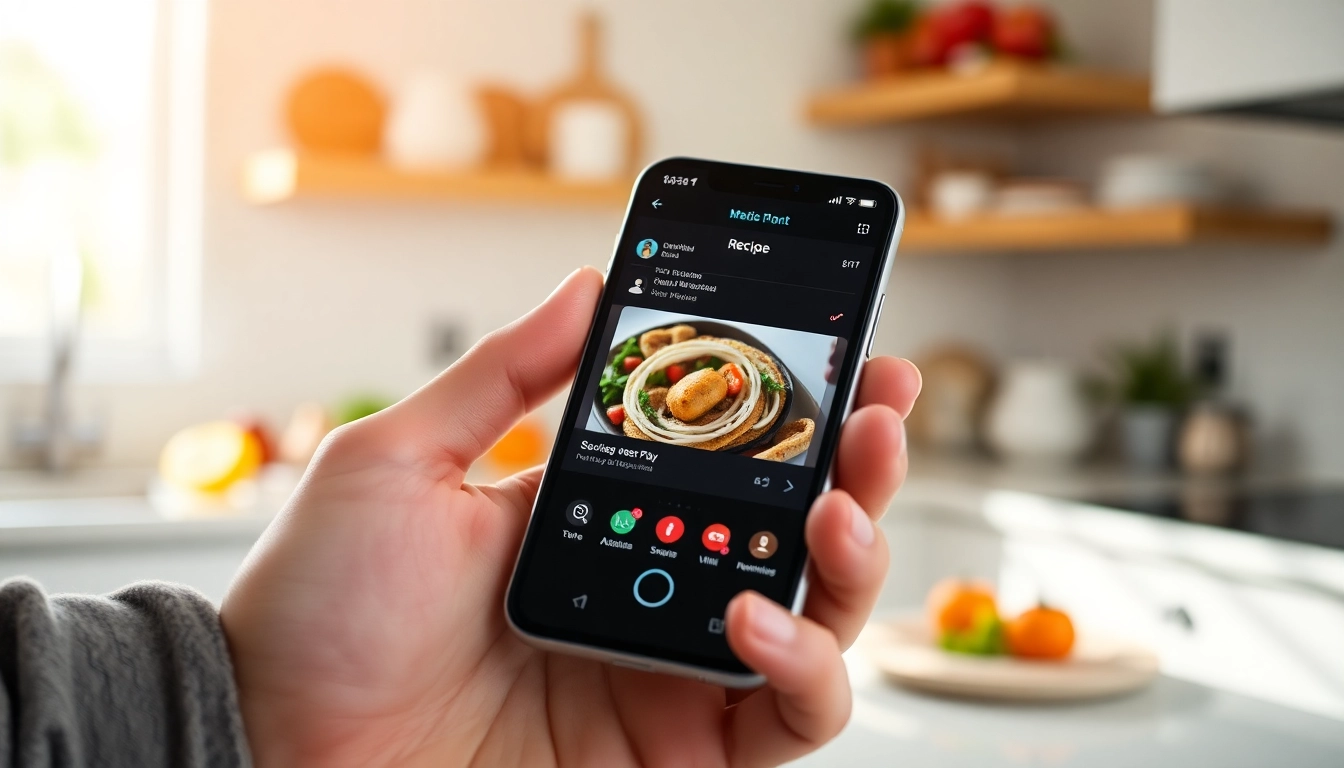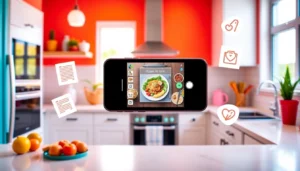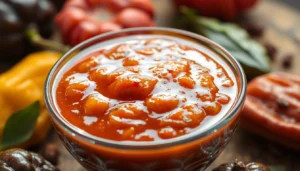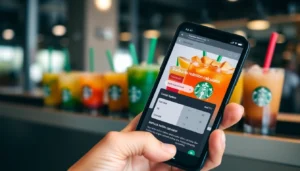Understanding the Importance of Saving Recipes from Social Media
In the modern culinary landscape, social media platforms like Instagram, TikTok, Facebook, and YouTube have become vibrant hubs for discovering new recipes, cooking techniques, and innovative culinary ideas. These platforms offer an endless stream of visual content, step-by-step tutorials, and user-generated recipes, making them invaluable resources for home cooks, professional chefs, and food enthusiasts alike. However, with the constant influx of recipes shared across diverse channels, one challenge emerges clearly: how can you efficiently save recipes from social media for easy access, organization, and use? This question underscores the importance of adopting effective strategies and tools to manage digital recipe collections, ensuring that valuable culinary insights are preserved and readily available whenever needed.
Why Social Media is a Treasure Trove for Recipes
Social media’s rise as a primary source for recipes is driven by several compelling factors. Visual storytelling through photos and videos allows users to see dishes being prepared in real-time, fostering a sense of proximity and inspiration that traditional cookbooks cannot match. Platforms like TikTok and Instagram excel at highlighting quick, engaging recipe tutorials that appeal to a broad demographic, from busy professionals seeking instant meal ideas to aspiring home chefs eager to experiment with new cuisines.
Moreover, social media democratizes the culinary space by giving anyone the ability to share recipes, reviews, and tips, which often results in a diverse and authentic recipe database reflective of global cuisines. This openness accelerates innovation and community engagement, making social media an ideal source for discovering trending recipes, seasonal specialties, and cultural dishes from around the world.
However, despite its richness, this digital abundance presents a challenge: how do you curate, organize, and access these recipes efficiently, especially as the volume of saved content grows? This is where structured collection tools and dedicated apps come into play, enabling users to turn a chaotic collection of social media posts into a well-organized digital recipe library.
Common Challenges in Collecting Recipes from Various Platforms
While social media offers immense culinary inspiration, several barriers hinder effective recipe collection and management:
- Fragmentation: Recipes are scattered across multiple platforms, often in different formats (videos, images, text), making centralized access difficult.
- Inconsistent Layouts: Unlike traditional recipes, social media posts lack standardized formats, complicating extraction and organization.
- Paywalls and Content Restrictions: Some recipes are behind paywalls or embedded within platform-specific interfaces, requiring additional steps to access.
- Loss of Content: Posts can be deleted or accounts deactivated, risking loss of valuable recipes.
- Difficulty in Searching and Filtering: Without proper tagging or categorization, finding specific recipes quickly can become cumbersome.
Addressing these issues requires a combination of technological solutions and best practices to streamline the process of saving and organizing recipes from social media.
Benefits of Organizing Your Saved Recipes
Implementing effective organization strategies for social media recipes yields numerous benefits:
- Time Efficiency: Quickly retrieve recipes without scrolling through endless posts, reducing time spent searching for favorite dishes.
- Meal Planning Simplification: A well-organized collection facilitates seamless meal prep, grocery list creation, and dietary adjustments.
- Recipe Accessibility: Centralized storage ensures recipes are accessible across devices, regardless of platform or location.
- Customization and Personalization: Tagging and categorization enable users to tailor their collections to dietary preferences, cuisines, or occasions.
- Content Preservation: Saving recipes safeguards against content loss due to platform changes or account deactivation.
In essence, an organized recipe collection transforms casual browsing into a powerful culinary resource, empowering users to cook confidently and creatively.
Best Methods to Save Recipes from Social Media Platforms
Using Apps and Tools for Instagram, TikTok, Facebook, and YouTube
Advancements in technology have led to the development of specialized apps and tools designed explicitly for saving social media recipes effectively. These tools often feature seamless integration with social media platforms, allowing users to share or import content with minimal effort. For instance, apps like Flavorish enable users to import recipes directly from Instagram, Facebook, TikTok, and YouTube by sharing posts or videos to the app, which then extracts the recipe content automatically. This process eliminates manual copying, reducing errors and saving time.
Other popular apps like ReciMe and Recipe Keeper offer cross-platform compatibility, allowing users to accumulate recipes from various sources into a single, synchronized library accessible via smartphones, tablets, or desktops. Many of these tools support rich media formats, enabling users to retain images, videos, and detailed instructions—preserving the original context and clarity of each recipe.
Manual vs. Automated Saving Techniques
While automated tools have transformed the recipe-saving landscape, understanding when to use manual methods remains essential. Automated techniques generally involve sharing posts directly to dedicated apps or using browser extensions for quick import, suitable for high-volume or fast-paced environments. Conversely, manual methods—such as screenshotting, copying text, or transcribing recipes—are useful for one-off or complex recipes that require nuanced extraction or for platforms with limited integration options.
Best practice involves a hybrid approach: leverage automation for efficiency, especially when dealing with visual-heavy content like TikTok videos, but incorporate manual editing to ensure accuracy, add personalized tags, or organize recipes into your preferred categories.
Integrating Your Favorite Apps for Better Organization
To maximize efficiency, integrate multiple apps and platforms into your workflow. For example, use social media sharing options to send content directly to Flavorish or ReciMe, then synchronize your library with a comprehensive organization app like Recipe Keeper. Many tools offer cloud syncing, tagging, and search features, enabling a unified, accessible recipe database.
Pro tip: Implement consistent tagging strategies—such as cuisine type, difficulty level, or dietary restrictions—to streamline searchability. Regularly review and categorize recipes as they are added, turning your digital collection into a personalized culinary catalog tailored to your cooking style.
Top Apps and Platforms for Saving Recipes from Social Media
Features to Look for in Recipe Saving Apps
When selecting a recipe-saving app, focus on features that enhance usability, accuracy, and integration:
- Multi-Platform Support: Compatibility with iOS, Android, web browsers, and desktop applications.
- Ease of Import: Direct sharing or importing from social platforms like Instagram, TikTok, Facebook, and YouTube.
- Rich Media Handling: Ability to save images, videos, and detailed instructions in a structured way.
- Tagging and Categorization: Customizable tags to organize recipes by type, occasion, or dietary needs.
- Syncing and Backup: Cloud storage and synchronization across devices to prevent data loss.
- Search and Filtering: Robust search options based on tags, ingredients, or keywords.
- Additional Features: Meal planning, grocery list generation, and sharing capabilities for collaborative cooking.
Comparing Popular Tools like Flavorish, ReciMe, and Recipe Keeper
Let’s examine three leading platforms, highlighting their strengths and ideal use cases:
Flavorish
- Supports importing recipes from multiple social platforms via sharing links or direct integration.
- Offers an intuitive interface for organizing recipes with tags, notes, and images.
- Provides features for creating shopping lists and meal plans.
- Ideal for users who want a sleek, all-in-one solution for social media recipes.
ReciMe
- Specializes in consolidating recipes from Instagram, Pinterest, TikTok, Facebook, and more.
- Focuses on generating grocery lists and meal plans directly from stored recipes.
- Supports cross-platform synchronization and easy sharing options.
- Suitable for users interested in detailed meal prep and shopping automation.
Recipe Keeper
- Offers extensive organization features, including categorization, tagging, and search.
- Compatible across devices, including iOS, Android, Windows, and Mac.
- Supports photo and PDF imports, making it versatile for different recipe formats.
- Best for users who seek a comprehensive, customizable recipe management system.
How to Choose the Best App Based on Your Cooking Style
Choosing the right app hinges on individual preferences and cooking habits. Consider the following factors:
- Volume of Recipes: Larger collections benefit from apps with robust tagging and search features like Recipe Keeper.
- Platform Ecosystem: Prefer apps that sync seamlessly with your devices (e.g., iPhone, Android, desktop).
- Sources of Recipes: If you primarily source from social media, prioritize tools with strong social media integration like Flavorish or ReciMe.
- Additional Features: Meal planning, shopping lists, and collaboration tools add significant value for organized users.
- Ease of Use: Intuitive interfaces and minimal manual input accelerate the saving process.
Compare free trials, reviews, and feature lists to identify the app that best complements your culinary workflow.
Step-by-Step Guide to Import Recipes from Social Media
Sharing and Saving Recipes on Instagram and TikTok
Most social media platforms facilitate sharing content to external apps via built-in share options. Here’s how to do it effectively:
- Identify the recipe post or video you want to save.
- Tap the share icon (often represented by an arrow or three dots).
- Select the destination app—such as Flavorish, ReciMe, or your preferred recipe manager.
- Ensure that the app is configured to parse the shared content to extract recipe details.
Some platforms, like TikTok, embed recipes within videos or captions, which may require extracting ingredients and instructions manually or via AI-powered apps that can transcribe and organize content.
Using Browser Extensions and Share Options
For content that appears on web pages, browser extensions can facilitate quick saving:
- Install a compatible extension (e.g., Save to Flavorish or Evernote).
- While browsing, click the extension icon to capture the recipe or video.
- Choose to save it directly into your organized recipe library, tagging appropriately.
Additionally, many social platforms now support direct sharing links or export options, enabling seamless integration with recipe management apps.
Organizing and Tagging Your Recipes for Quick Access
Post-import, apply consistent tags and categories: for example, “Vegan,” “Dessert,” “Quick Meals,” or “Italian Cuisine.” Use descriptive titles and notes to add context, such as difficulty level or special ingredients. Regular review and curation enhance the usability of your collection, making future searches faster and more precise.
Maximizing Your Recipe Collection for Meal Planning and Cooking
Creating Grocery Lists from Saved Recipes
Modern recipe apps typically allow you to convert your saved recipes into shopping lists with just a few taps. By aggregating ingredients from multiple recipes, you can prepare consolidated shopping lists, reducing waste and ensuring you have all necessary ingredients on hand.
For example, a single shopping list might combine the ingredients for a pasta dish and a side salad, optimized to minimize trips to the store.
Meal Planning with Your Digital Recipe Library
Leverage your organized collection to plan weekly menus. Use calendar integrations within apps or external tools to allocate recipes to specific days, considering prep time, ingredient availability, and nutritional goals. Automated meal planners can suggest recipes based on your collection, dietary preferences, or upcoming occasions.
Sharing and Collaborating on Recipes with Family and Friends
Social recipe management tools support collaboration. Share your curated collections with family members or meal prep partners, allowing joint modifications, comments, and synchronized updates. This collaborative approach encourages culinary experimentation and streamlines household meal planning.



